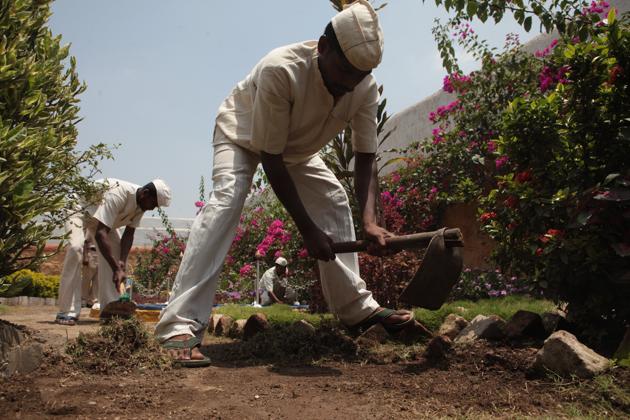Reforms to free crowded state prisons of undertrials
Five-member committee to look at issues ranging from over-crowding in prisons to absence of sound legal aide for undertrials.
A number of serious issues relating to jails in Maharashtra are expected to be addressed in the justice Dr S Radhakrishnan committee report on modernisation of prisons in Maharashtra, scheduled to be submitted to the Bombay high court on June 30.

Established after a directive from the Bombay high court which was hearing a public interest litigation (PIL) in 2017, this five-member committee has been mandated to come up with a comprehensive report recommending suggestions for model prisons in the state. The committee has looked into long-pending issues, such as over-crowding in Maharashtra prisons, the high number of undertrials and the absence of sound legal aide for undertrials, among other issues.
According to the national crime records bureau (NCRB), Maharashtra has the highest number of jails and sub-jails in the country and the second highest number of central jails. Sub-jails are small units meant for confining undertrials involved in cases before the local magistrates and convicts sentenced upto one month prison time.
Although there have been committees, like the single-member Singharwell committee in the early 2000s and a three-member Kundukar committee in the late 2000s, these reports have long been forgotten.
Therefore, the current committee is referring to the Model Prison Manual, 2016, the united nations standard minimum rules for the treatment of prisoners along with justice Mulla committee report and justice Krishna Iyer committee on women prisoners, both from the 1980s, according to Vijay Raghavan, professor at Centre for Criminology and Justice (CCJ) at Tata Institute of Social Science (TISS).
The committee headed by S Radhakrishnan, comprises Bhushan Kumar Upadhyay; additional director general of prisons; SN Chavan, retired jail superintendent of at least three jails in the state; NS Karad, deputy secretary of prison department and Raghavan.
The committee has managed to bring about a number of changes in the jail system since it was constituted. However, the host of suggestions for a model (modern) prison is set to be submitted on June 30.
Number of jails
In the five-year span, between 2013 and 2017, 11 new jails, including seven open jails, were built in the state. During the corresponding years, the number of total prison inmates has gone of by at least 5,000; the corresponding increase in the number of jail officials is dismal.
The heavily lopsided ratio of undertrials and convicts in the state prisons sheds light on the problem of overcrowding of prisons. The set of prisons built to hold 23,942 prisoners is a crammed home to 31,214 inmates instead.
Shortage of jail authorities
Among the inmates, only 28 per cent are convicts, while almost 70 per cent are awaiting trial. Even for people who do get court dates for their hearings, it is an uphill task.
In a vicious cycle of short-staffed jail administrative mechanism and a slow-pased judiciary, undertrials miss their court hearings at times when there is not enough jail staffers to take them to the court premises, according to a social worker at the Yerwada women’s jail.
Legal aide service for undertrials
Jayant Umranikar, former state police head, points out the provision of amicus curiae - government appointed lawyers - for the people who cannot afford legal services is in a bad shape. While the lawyers, he says, are not up to the mark, they also ask for money from their clients while they are not supposed to.
Raghavan, who is also on the justice Dr Radhakrishnan committee for prison reforms points out that the low honorarium for the amicus curiae lawyers is the sticking point on this front. The committee, he said, will be recommending an increase in the honorarium. “To have competent lawyers, you must pay them well. Very few can provide pro bono services. That will have some impact,” he says.






